By Melissa Arnold
With its many beaches, parks, lakes and farmland, it’s easy to see that Long Island is full of natural beauty. For the local art community, the variety of landscapes provide a constant source of inspiration.
Of course, nature is always changing, but not only with the seasons. Global warming continues to affect all of us, driving home the message that nothing is guaranteed and that we must work together to protect our world.
The Smithtown Township Arts Council (STAC) is reflecting on climate change and the environment through an extended series of exhibits at the Mills Pond Gallery in St. James that began this past fall. Their next exhibit, Long Island Landscapes: From Awe to Action, invites viewers to appreciate the beauty of this area while considering what they might do to preserve it. The show opens Feb. 5.
“I like to do a local, landscape-based exhibit each year, and I wanted to see if there was a way to connect it to the theme of climate change,” said Allison Cruz, executive director at the Mills Pond Gallery. “Art is a method of communication, a way to help people see things and make connections in new ways. We can read the newspaper or watch the news to see that the ice caps are melting and the world is heating up, but to see these artistic expressions of our area makes you realize we might not have them forever.”
The exhibit features 60 works from 53 Long Island artists. A variety of styles and mediums will be on display, including acrylic, watercolor, oil, graphite and charcoal.
Each artist also took time to reflect on what the natural world and environmental conservation means to them.
Anita Simmons of Commack finds her inspiration while going for a drive, walking through area parks or spending the day at the beach. A retired accountant and the daughter of an avid gardener, Simmons grew up next to sprawling fields of corn and potatoes — crops that are no longer as common on Long Island.
“My paintings are an emotional response to what can be seen in the natural landscape of Long Island, which I have enjoyed all my life,” she said. “My dad would plant morning glories that grew up our chimney every year, and I have always loved them. When I saw the morning glories at Schneider Farm in Melville, I just had to photograph them to paint later.”
Ellen Ferrigno often paints scenes very close to her home in Port Jefferson. Protecting the environment has been a part of her life for many years, and she eventually became a Cornell Cooperative Master Gardener to increase her own understanding and educate others about the natural world.
“What supports nature’s environment is a community as well as individual efforts. Therefore, I paint these scenes as reminders of what nature’s beauty is,” she explained. “During the early part of the pandemic, I researched and painted the plants in my gardens that attract beneficial insects, provide a soothing tea or feed the birds. I often included a narrative to educate the art viewers. I also found myself increasing my gardens, putting out feeders for the birds and attracting the bees.”
Cruz and STAC have partnered with a number of local environmental organizations to provide information, literature and ways for visitors to support their cause. They include The Nature Conservancy, Defend H2O, Save the Sound, The Sierra Club, Higher Ground, The Coastal Research and Education Society of Long Island, the Seatuck Environmental Association, Save the Great South Bay, Long Island Water, and Group for the East End.
“We have so many wonderful locally-focused groups that work hard every day to protect and preserve our environment here,” said Cruz. “This isn’t just about appreciating beautiful art — we also want to bring attention to all the good these groups are doing and encourage visitors to get involved.”
Along with Simmons and Ferrigno, artists participating in this exhibit include Marsha Abrams, Lucia Alberti, Tina Anthony, Shain Bard, Ron Becker, Claudia Bedell, Sheila Breck, Joyce Bressler, Renee Caine, Carol Ceraso, Patricia Cisek, Tobi Cohen, Donna Corvi, Lou Deutsch, Julie Doczi, Karin Dutra, Dorothy Fortuna, Donna Gabusi, Vivian Gattuso, Jan Guarino, Regina Halliday, David Herman, Wendy Hildreth-Spence, Gia Horton Schifano, John Hunt, Lynn Kinsella, Liz Kolligs, Lynn Liebert, E Craig Marcin, Avrel Menkes, Annette Napolitano, Catherine Rezin, Robert Roehrig, Oscar Santiago, Hillary Serota Needle, Gisela Skoglund, Lynn Staiano, Madeline Stare, Angela Stratton, John Taylor, Tracy Tekverk, Christine Tudor, Nicholas Valentino, Daniel van Benthuysen, Mary Ann Vetter, Mary Waka, Robert Wallkam, Patty Yantz, and Theodora Zavala.
—————————————–
Long Island Landscapes: From Awe to Action is on view at the Mill Pond Gallery, 660 Route 25A, Saint James from Feb. 5 through Feb. 26 Proof of vaccination and masks are required to visit. Meet the artists at an opening reception at the gallery on Feb. 5 from noon to 4 p.m. For more information about the exhibit and what you can do to protect the environment, call 631- 862-6575 or visit www.millspondgallery.org.

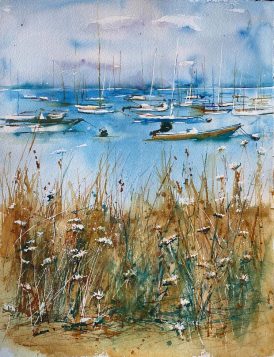



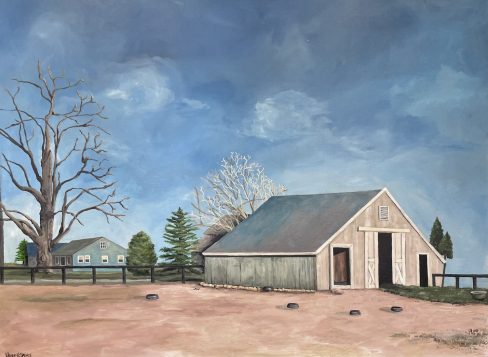

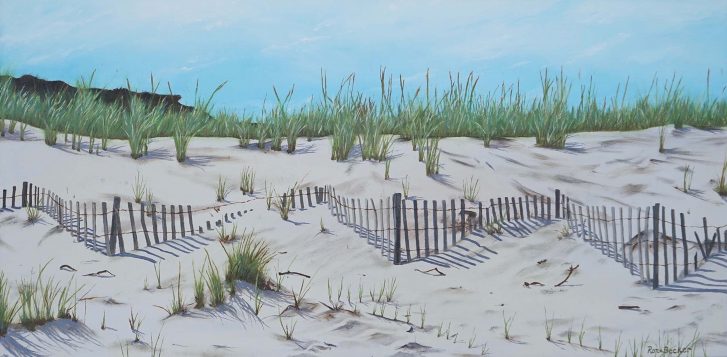



 When I last looked at the Milky Way, a couple of days ago, it reminded me of our most humble place in the universal ethos and of a famous line by the poet Robinson Jeffers: “There is nothing like astronomy to pull the stuff out of man, His stupid dreams and red-rooster importance: let him count the star-swirls”.
When I last looked at the Milky Way, a couple of days ago, it reminded me of our most humble place in the universal ethos and of a famous line by the poet Robinson Jeffers: “There is nothing like astronomy to pull the stuff out of man, His stupid dreams and red-rooster importance: let him count the star-swirls”.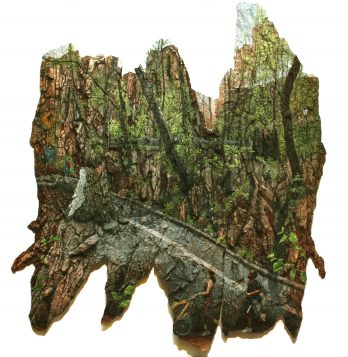
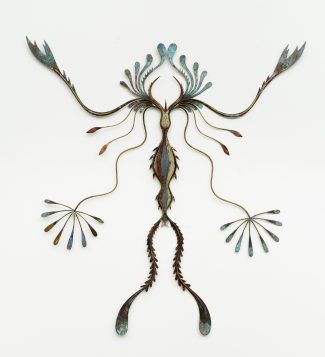
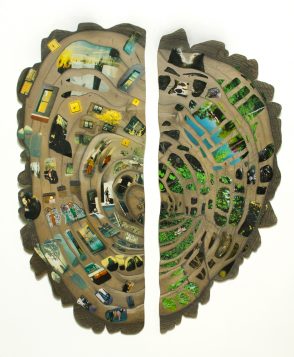
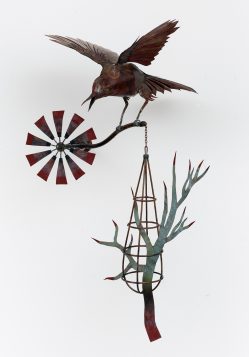
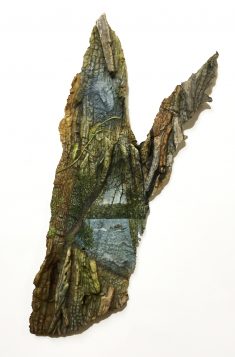

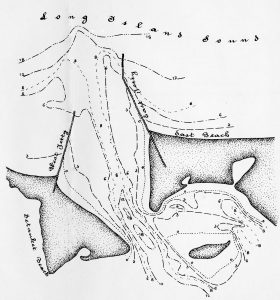
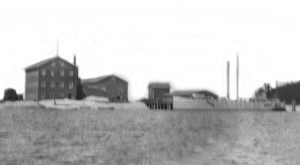
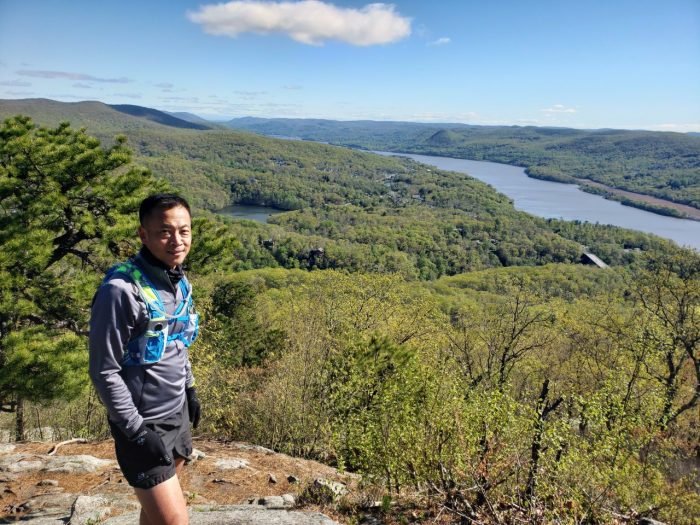







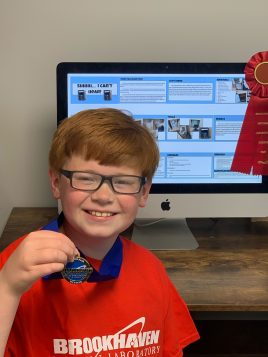
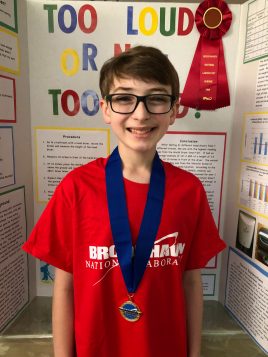

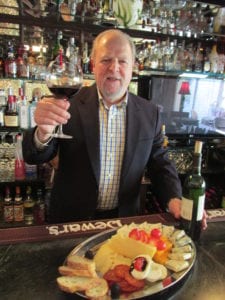
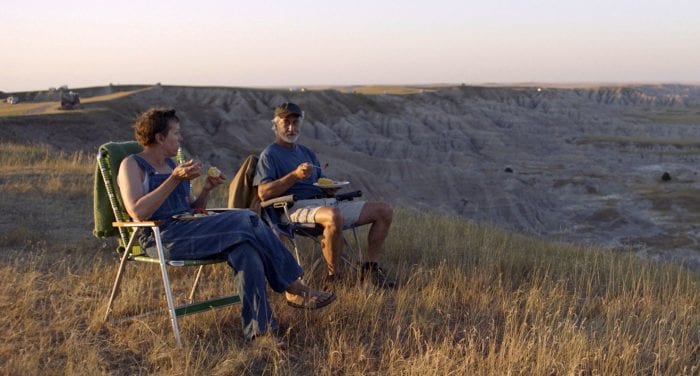
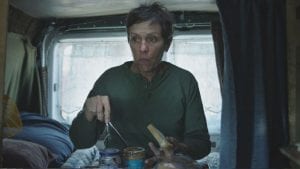 Fern (a brilliantly understated Frances McDormand) is a widow who, in 2011, lost her job at the US Gypsum plant in Empire, Nevada, when the factory shut down. The factory’s closing resulted in Empire becoming a ghost town. Fern has sold most of her belongings and lives in a van that she has retrofitted herself. She travels the country looking for work. The film opens with her at the Amazon fulfillment center, working a seasonal job.
Fern (a brilliantly understated Frances McDormand) is a widow who, in 2011, lost her job at the US Gypsum plant in Empire, Nevada, when the factory shut down. The factory’s closing resulted in Empire becoming a ghost town. Fern has sold most of her belongings and lives in a van that she has retrofitted herself. She travels the country looking for work. The film opens with her at the Amazon fulfillment center, working a seasonal job.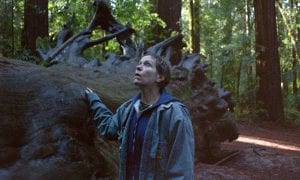 There are glimpses into Fern’s earlier life, most notably a trip later in the film to borrow money from her sister, but, for the most part, the film focuses on the ever-present, day-to-day existence. This is a challenging undertaking for a filmmaker, but Zhao’s deliberate pacing and laser focus create both a pastoral arc and one of great tension. Fern drives, makes dinner on a hotplate, sleeps, then drives some more. She takes a job; she works; she leaves. She drives, humming to herself. She walks in nature, taking in its vastness but also completely at peace. And then she drives.
There are glimpses into Fern’s earlier life, most notably a trip later in the film to borrow money from her sister, but, for the most part, the film focuses on the ever-present, day-to-day existence. This is a challenging undertaking for a filmmaker, but Zhao’s deliberate pacing and laser focus create both a pastoral arc and one of great tension. Fern drives, makes dinner on a hotplate, sleeps, then drives some more. She takes a job; she works; she leaves. She drives, humming to herself. She walks in nature, taking in its vastness but also completely at peace. And then she drives. Eventually, Nomadland shows these travelers do not dwell in emptiness, but instead in lives of peace, away from the trappings and limitations of self-imposed restrictions. Fern meets Dave (kind and open as played by David Strathairn) at the gathering and then again later. There are the slightest of romantic sparks. Eventually, Dave settles at his son’s house, where Fern visits him. He asks her to stay, but she realizes that it is not the life she wants. Fern reveals she has found herself in this wandering existence. The revelation is presented in the simplest of ways, but it is epiphanous in its weight and import.
Eventually, Nomadland shows these travelers do not dwell in emptiness, but instead in lives of peace, away from the trappings and limitations of self-imposed restrictions. Fern meets Dave (kind and open as played by David Strathairn) at the gathering and then again later. There are the slightest of romantic sparks. Eventually, Dave settles at his son’s house, where Fern visits him. He asks her to stay, but she realizes that it is not the life she wants. Fern reveals she has found herself in this wandering existence. The revelation is presented in the simplest of ways, but it is epiphanous in its weight and import.



